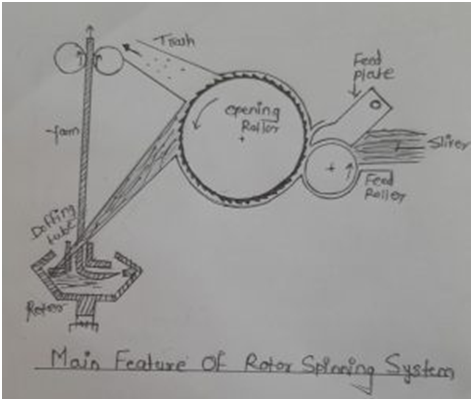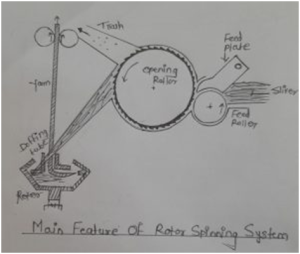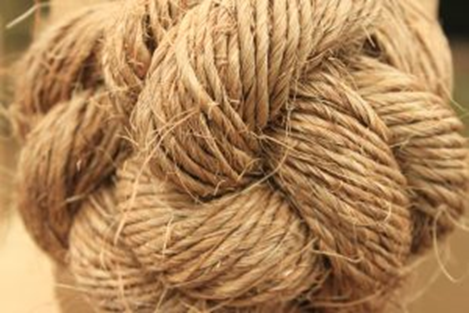To study the Rotor Spinning process of yarn

Open End Spinning:
Understanding the Principle and Construction
Open end spinning, also known as rotor spinning, is a yarn production process that involves the following operations in sequence: opening of feed sliver into individual fibers, assembling of individual fibers, twist insertion, and withdrawal of resultant yarn for winding onto a package. In this system, the fiber supply is reduced to individual fibers which are carried forward by an air system as free fibers. This gives rise to the name “free-fiber spinning”. The fibers are then progressively attached to the tail or “open end” of the already formed yarn, hence the name “open end spinning”. The process is also sometimes called “break-spinning” due to the interruption in the fiber supply.
Construction:
The rotor spinning system consists of a feed roller, an opening roller or combing roller clothed with saw teeth or pinned teeth, a feed tube or transport tube, a rotor with grooves on its periphery, a take-up roller, and a package winder.

Working:
The sequence of operation in rotor spinning can be broadly grouped into four units, namely fiber feeding and individualization, fiber assembly, twist insertion, and withdrawal of resultant yarn.
Fiber feeding and individualization:
A drawn sliver, generally a two-passage drawn frame sliver, is fed at a certain rate through a feed roller assembly to an opening roller. The opening roller rotates at high speed, opening the sliver into individual fibers. The speed of the opening roller and the teeth profile of the roller vary depending on the type of fiber being processed.
Fiber assembly:
The individual fibers are carried forward from the opening roller by an air current through a conical-shaped feed tube or transport tube, which accelerates the air current and leads to improved fiber orientation and straightness. The fibers carried by the air current are deposited on the groove of the rotor in the form of a ring.
Twist insertion:
As the rotor rotates, the centrifugal force presses the fiber against the inner peripheral surface of the rotor, causing it to rotate and insert twist into the fiber assembly. The rotational speed of the rotor may vary depending on the fiber and yarn count to be spun.
Withdrawal of resultant yarn:
The spinning of the yarn starts by inserting a seed yarn through the withdrawal tube. The yarn end makes contact with the rotating tail of the fiber assembly, and the resultant yarn is withdrawn at a certain rate by the take-up roller and wound onto a package.
Conclusion:
Open end spinning is a yarn production process that produces high-quality yarn with the help of a rotor spinning system. The process involves several stages, including fiber feeding and individualization, fiber assembly, twist insertion, and withdrawal of resultant yarn. The construction of the rotor spinning system includes various components such as a feed roller, an opening roller or combing roller, a feed tube, a rotor, a take-up roller, and a package winder. Understanding the principle and construction of open end spinning can help in the production of high-quality yarn.
visit link



